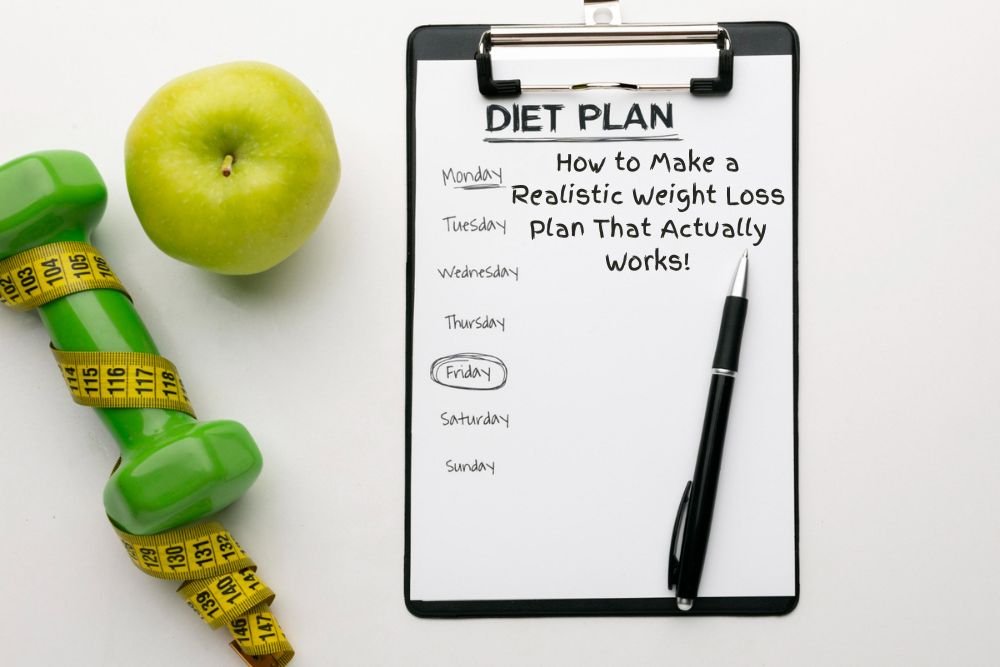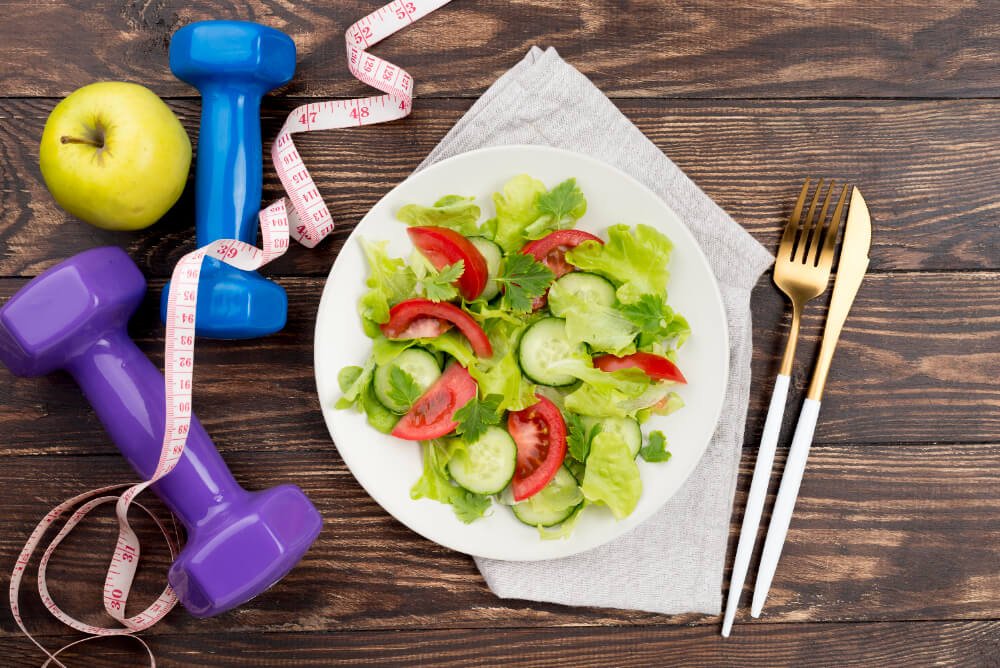Create lasting change! Learn how to make a realistic weight loss plan with balanced eating and exercise.
Losing weight can feel overwhelming, especially when faced with conflicting advice and fad diets that promise quick fixes.
But what if the key to success lies in a realistic weight loss plan tailored to your lifestyle? A plan that focuses on small, manageable changes can set the foundation for sustainable progress and long-term health.
Table of Contents
Why a Realistic Weight Loss Plan Matters
Creating a realistic weight loss plan ensures that your journey is sustainable and effective. Instead of chasing quick results that may lead to burnout or yo-yo dieting, a well-thought-out approach focuses on steady progress.
Quick fixes might deliver instant gratification, but they rarely lead to lasting change. On the other hand, a realistic plan embraces balance, helping you adopt healthier habits that can improve your overall quality of life.
Why Most Diets Fail—Click Here to Discover a Plan That Actually Works!
Understanding Your Current Habits
Evaluate Your Eating Patterns
Start by taking an honest look at your daily eating habits. Are you skipping meals and snacking late at night? Do emotional triggers lead you to overeat?
Identifying these patterns is essential for pinpointing areas of improvement.
You don’t need to overhaul your diet overnight. Begin with small changes, such as reducing sugary drinks or adding more vegetables to your plate.
These incremental shifts can have a significant impact over time.
Assess Your Activity Levels
Take note of how often you move during the day. If your job involves sitting for long hours, consider ways to integrate more activity into your routine. Walking during lunch breaks or opting for stairs instead of elevators are easy ways to get started.
Even if you’re new to exercising, remember that every bit of movement counts. Consistency is more important than intensity when building long-lasting habits.
Transform Your Body and Life—Click here to Start Losing Weight Today!
Setting SMART Goals for Weight Loss
What Are SMART Goals?
The SMART framework—Specific, Measurable, Achievable, Relevant, and Time-bound—is a powerful tool for creating realistic weight loss objectives.
By defining clear goals, you’ll have a roadmap to success.
- Specific: “I want to lose 10 pounds by improving my diet and exercising more.”
- Measurable: Track progress through weekly weigh-ins or fitness milestones.
- Achievable: Focus on losing 1-2 pounds per week, which is a healthy and realistic target.
- Relevant: Connect your goals to personal motivations, such as improving energy or reducing health risks.
- Time-bound: Set deadlines, like reaching your goal within three months.
Breaking Down Goals
Large weight loss targets can feel intimidating. Instead, break them into smaller, manageable milestones.
Celebrate every pound lost or habit improved—it’s these small wins that keep you motivated.
Making Healthy Food Choices
Embrace a Balanced Diet
Focus on adding more nutrient-rich foods to your meals. Aim for a plate filled with colorful vegetables, lean proteins, and whole grains. These foods provide essential nutrients and keep you feeling full longer.
Avoid demonizing certain foods or labeling them as “off-limits.” Instead, practice moderation. It’s okay to enjoy a slice of cake occasionally, as long as your overall diet remains balanced.
Control Portion Sizes
Overeating often happens because we don’t pay attention to portion sizes. A simple trick is to use smaller plates, which can make your portions appear larger.
- Aim for meals around 400–500 calories for better control.
- Snack on whole foods like nuts, fruits, or yogurt to curb hunger between meals.
Your Path to Sustainable Weight Loss Starts Here—Click the Link to Learn How!
Increasing Physical Activity
Start Small and Stay Consistent
For beginners, aiming for 150 minutes of moderate exercise weekly can feel daunting. Break it into smaller chunks—like 20 minutes of brisk walking daily. As you grow comfortable, incorporate strength training twice a week to build muscle and boost metabolism.
Find Enjoyable Activities
Exercise shouldn’t feel like a chore. Try activities you genuinely enjoy, such as dancing, swimming, or yoga. The more fun it is, the easier it’ll be to stick with it long-term.
Staying Motivated Throughout Your Journey
Find Your “Why”
Your reason for losing weight should be deeply personal. Whether it’s improving health, boosting self-confidence, or being active with your kids, keeping this “why” in mind will help you push through tough days.
Build a Support System
Lean on friends, family, or online communities for encouragement. Sharing your goals with others can keep you accountable and inspired.
Celebrate Your Progress
Acknowledge every milestone—big or small. Treat yourself to a non-food reward, like new workout gear or a relaxing spa day, when you achieve a goal.
Click to Learn How to Make Weight Loss Simple, Fun, and Sustainable!
Monitoring Progress and Adjusting as Needed
Keep Track of Your Journey
Use a journal or app to log your meals, workouts, and weight changes. Seeing your progress in black and white can be incredibly motivating and highlight areas for improvement.
Stay Flexible
Plateaus are part of the process. Instead of getting discouraged, tweak your strategy. Add variety to your workouts, adjust portion sizes, or seek professional advice for guidance.
Conclusion: How to Make a Realistic Weight Loss Plan That Actually Works
A realistic weight loss plan isn’t about perfection—it’s about persistence. By focusing on gradual, sustainable changes, you can build habits that support your health for years to come.
Remember, every journey is unique. Stay patient, trust the process, and celebrate your progress. Your future self will thank you!





